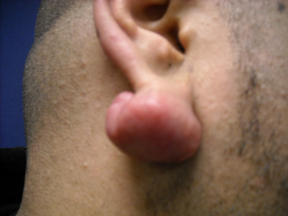
A keloid is a greatly enlarged scar that projects above the skin surface. The skin heals by formation of scar tissue, which at first is often red and somewhat prominent. As the months pass, a scar usually becomes flat.
Unfortunately, sometimes scars enlarge to form firm, smooth, hard growths called keloids.
Typically a true keloid will grow outside the zone of trauma or injury.
II. Keloid Scar Causes:
We don't know exactly why keloid scars form in humans.
While most people never form keloids, others develop them after minor injuries and even insect bites or pimples. Keloids may form on any part of the body, although
the upper chest and upper back are especially prone to keloid scars formation.
Keloids are a cosmetic nuisance and never become malignant. keloid scars occur more frequently in dark-skinned people and certain ethnic types like Asian, Hispanic and Mediterranean.
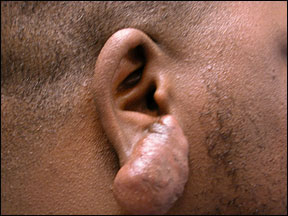
III. Chicago Keloid Treatment:
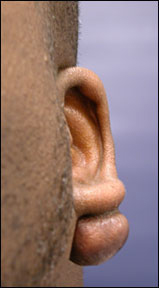
There is no satisfactory keloid treatment.
Some doctors have had success injecting keloids with Kenalog or Bleomycin, an anticancer drug.
The most accepted keloid treatment is to inject a long-acting cortisone into the keloid once a month. After several injections with cortisone, the keloid usually becomes less noticeable and flattens in three to six months time.
A new keloid treatment is to apply a silicone gel preparation over the keloid scar for 12-24 hours each day. This treatment is started three to four weeks after the wound or injury. The gel preparation should be covered with an ace bandage, cloth wrap, or tape and changed every 7-10 days based upon need. The gel can be washed and used over each day. An even newer form of silicone that is more convenient is Dr Speron Scar support Treatment (applied topically and contains cortisone, Vitamin E and silicone).
With daily use, the keloid will become flatter and smoother within two to twelve months. Surgery is always an option but one must remember – the keloid can always come back – sometimes even bigger! Most patients need to be watched after surgery to assess the need for cortisone shots if it looks like the keloid is coming back. That is why follow-up appointments are very important. More aggressive treatment includes radiation therapy after surgery to decrease recurrence rates.
Very recently, pre-treatment with Retin-A cream 3 weeks prior to surgical removal has been noted to dramatically reduce the incidence of recurrence.
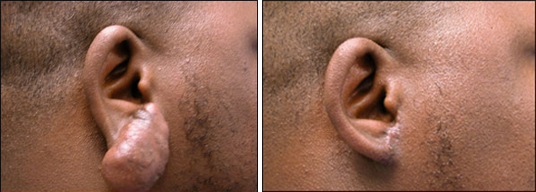
27 year old male before and 1 year after right ear keloid removal. Notice the nice improvement with minimal scarring. He was only treated with Retin-A for 3 weeks before and 6 months after his simple office procedure. He has not has any steroid injections or any other treatments.
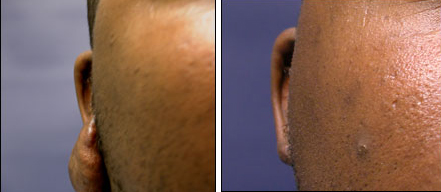
27 year old male before and 1 year after right ear keloid removal. Notice the improvement in ear shape. He was very embarrassed about the shape of his ear and was always trying to cover it prior to surgery.
When I first published The 7 Critical Questions to Ask Before Letting Any Surgeon Touch You, I had no idea that it would be so popularly received. Since its publication, this brief guide has helped thousands like you to more safely navigate the world of cosmetic surgery. The 7 Questions have been updated and a bonus section, Applying the 7 Questions, has just been added. Be my guest to read, learn and share.